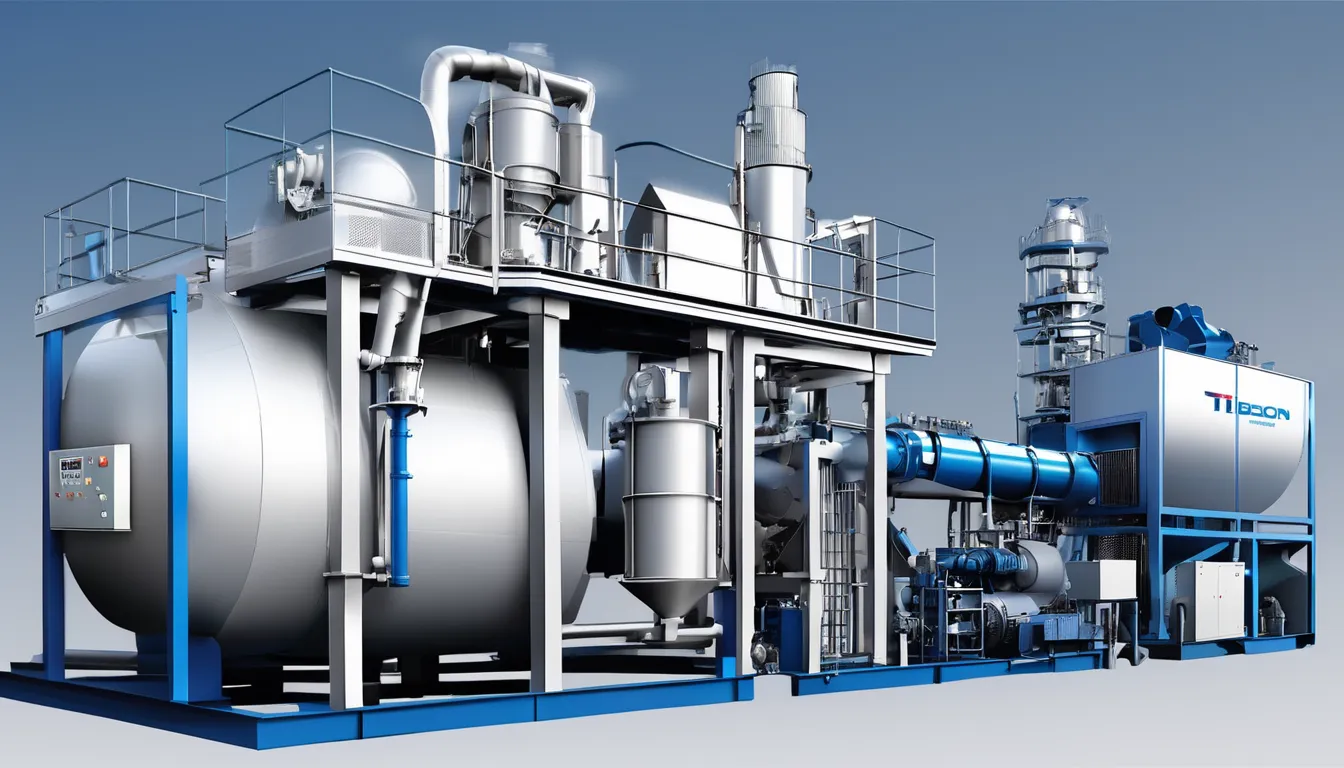How to Choose the Best Turbo Expander for Your Project

When you’re faced with the task of selecting the best turbo expander for your project, it’s essential to start by understanding your specific requirements. You’ll need to evaluate factors like project goals, flow rates, and operating conditions to ensure you’re on the right track. From there, you can compare different types of expanders and their performance specifications. However, the real challenge often lies in balancing efficiency and costs—something that could make or break your project. So, what criteria should you prioritize to make the best choice?
Understand Your Project Requirements
Before diving into the selection process, it’s crucial to understand your project requirements. Knowing what you need helps you avoid costly mistakes later on. Start by defining the goals of your project. What’re you trying to achieve with the turbo expander? Is it efficiency, cost reduction, or a specific power output?
Next, consider the operating conditions. What’s the temperature range, pressure levels, and gas composition? These factors significantly affect the choice of turbo expander. If you overlook them, you might end up with equipment that can’t handle the demands of your project.
Don’t forget about the installation space and maintenance requirements. Ensure you have enough room for the unit and that it can be easily accessed for servicing.
You should also evaluate the available budget. Turbo expanders vary widely in price, and understanding your financial constraints will help you make a more informed decision.
Evaluate Turbo Expander manufacturer Types
When it comes to selecting a turbo expander, you’ll find several types available, each designed for specific applications and operating conditions. The two most common types are impulse and reaction expanders.
Impulse expanders use high-velocity jets to convert pressure energy into mechanical energy, making them ideal for applications requiring rapid expansion and low-pressure drops. On the other hand, reaction expanders rely on a series of rotor blades that harness both pressure and velocity changes, which can be more efficient in certain circumstances.
Another option is the radial turbo expander, known for its compact design and high efficiency. This type is particularly useful in small-scale applications where space is limited.
Alternatively, axial turbo expanders are preferred for larger-scale operations, as they can handle higher flow rates and are generally more efficient at larger sizes.
Consider the specific demands of your project when choosing a type. Factors like flow rate, inlet pressure, and temperature range will significantly influence your decision.
Analyze Performance Specifications
Understanding performance specifications is crucial for selecting the right turbo expander for your application. Start by assessing the required flow rate. This is the volume of gas you need to process, and it directly impacts the expander’s efficiency.
Check the pressure ratios, as they determine how effectively the expander can convert pressure energy into mechanical energy.
Next, look at the temperature ranges. Ensure the expander can handle the operational temperatures of your process, as exceeding these limits can lead to failures.
Evaluate the efficiency ratings, typically expressed as isentropic efficiency, to gauge how well the expander converts energy. Higher efficiency means better performance and lower operational costs.
You should also consider the power output. Make sure it aligns with your project’s energy needs.
Finally, review the turndown ratio, which indicates the expander’s ability to operate efficiently at varying loads. A suitable turndown ratio helps maintain performance across different operating conditions.
Consider Material and Design
In selecting a turbo expander, considering material and design is essential for ensuring durability and efficiency in your application. The right materials can withstand extreme temperatures and pressures, while thoughtful design enhances performance. You’ll want to evaluate both factors carefully to maximize your system’s reliability.
| Material | Benefits | Considerations |
|---|---|---|
| Stainless Steel | Corrosion resistance | Heavier than alternatives |
| Aluminum | Lightweight and cost-effective | Less durable at high temps |
| Titanium | High strength-to-weight ratio | Higher initial cost |
| Composite | Lightweight and strong | May require special handling |
| Inconel | Excellent heat resistance | More expensive |
When you choose materials, think about the specific environment your turbo expander will operate in. For example, corrosive environments may require stainless steel or Inconel, while weight-sensitive applications might benefit from aluminum or composites. Furthermore, the design should align with your performance requirements, ensuring optimal airflow and minimal losses. By paying attention to these details, you can enhance the overall efficiency and reliability of your turbo expander.
Assess Cost and Efficiency
Evaluating the cost and efficiency of a turbo expander is key to optimizing your system’s performance and budget. Start by determining your project’s financial constraints. Turbo expanders can vary widely in price, so it’s essential to balance upfront costs with long-term savings.
Look for options that offer competitive pricing without compromising on quality or performance.
Next, consider the efficiency ratings of various models. A higher efficiency turbo expander can lead to significant energy savings, reducing your operational costs over time.
Check the manufacturer’s specifications and ask about the performance metrics, such as isentropic efficiency and flow capacity.
You should also factor in maintenance and operational expenses. Some models may have lower initial costs but require more frequent repairs or replacements, which can add up.
Conclusion
Choosing the right turbo expander for your project doesn’t have to be overwhelming. By understanding your specific requirements, evaluating different types, analyzing performance specs, and considering materials and costs, you can make an informed decision. Remember, it’s all about balancing efficiency with your budget while ensuring the expander meets your project goals. With careful consideration, you’ll find the perfect turbo expander that delivers optimal performance and long-term savings. Trust your instincts, and you’ll succeed!
